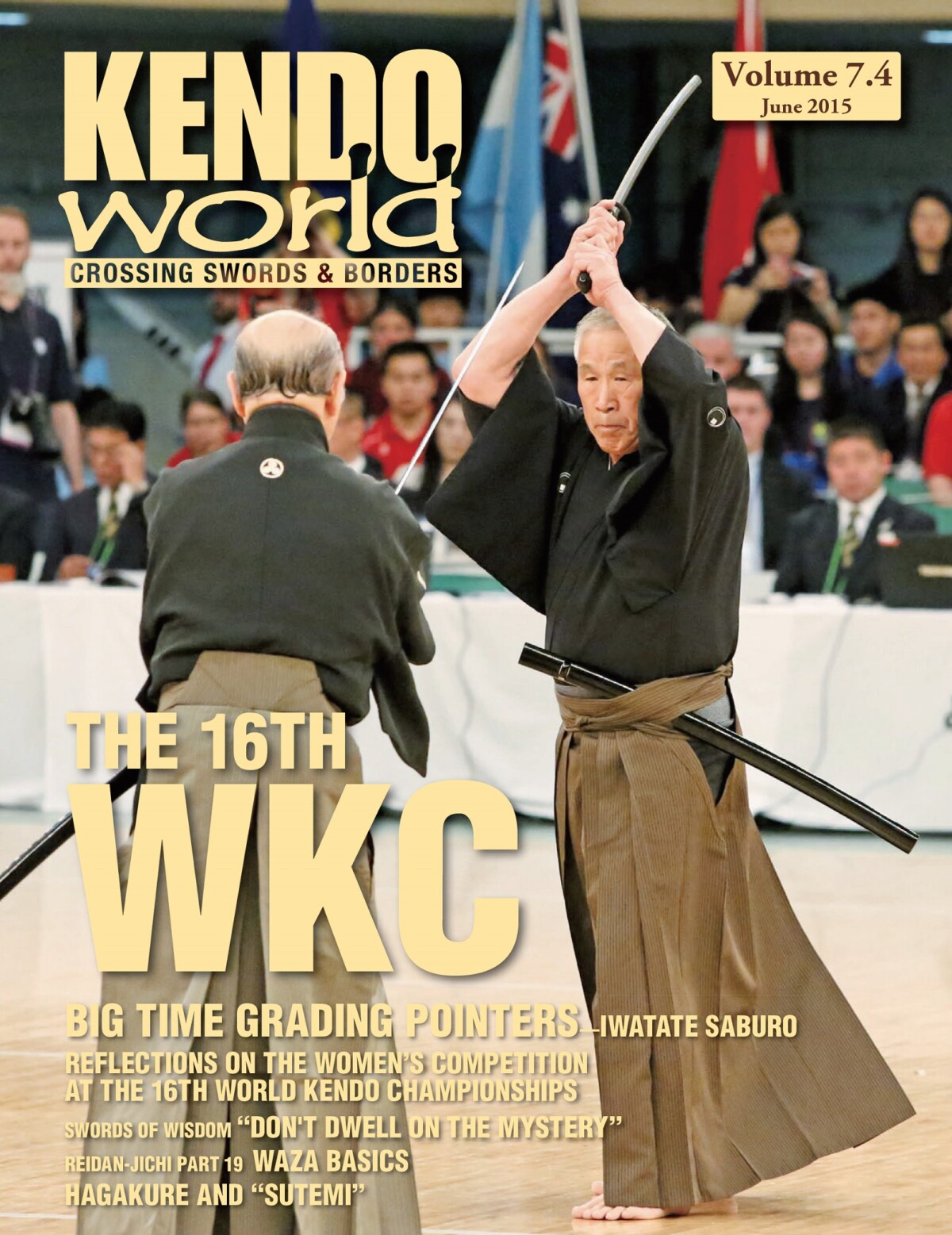
Kendo World 7.4
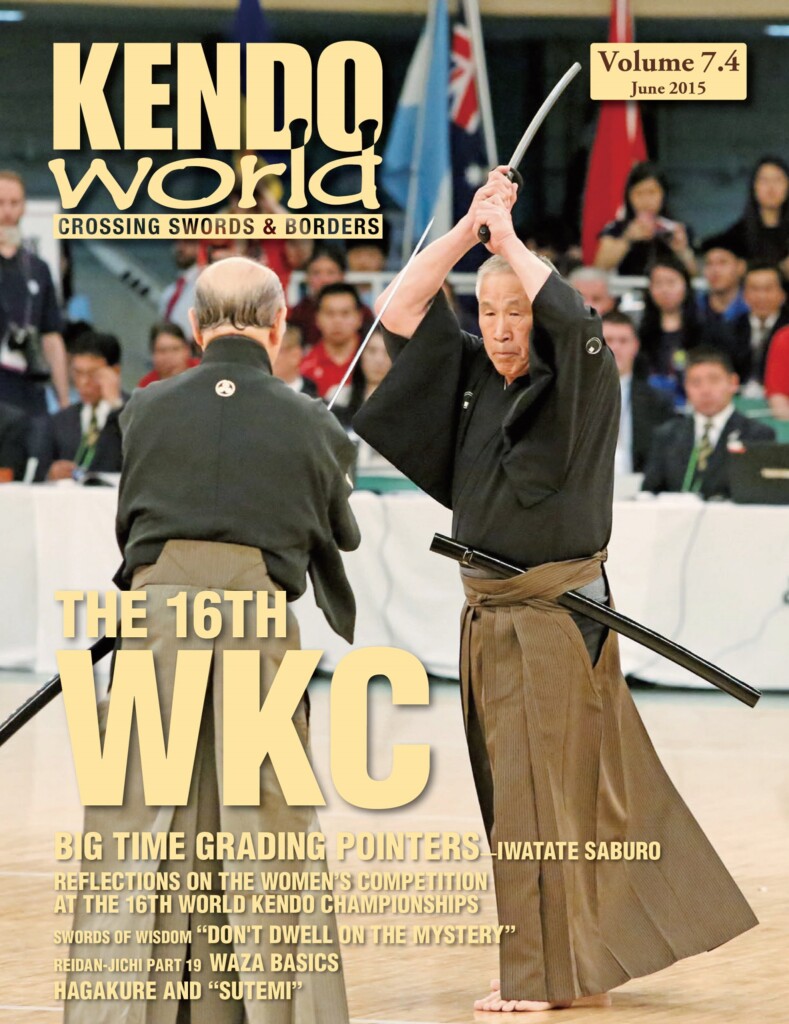
Editorial
By Alex Bennett
Kendo World’s Editor-in-Chief reflects on three big days in May 2015, namely the 16th World Kendo Championships.
“The 16WKC finished with a bang. In the end, Japan came first in all of the competitions, but crikey it was close. Being the first WKC decided through a bid system, this tournament was special in many ways. The fact that it was held in the Nippon Budokan, the venue for the 1st WKC held 45 years earlier, made it just that little bit more exceptional. But not only that, it was the biggest tournament ever with over 600 participants representing the 56 countries and regions in attendance.”
The 16th WKC
By Michael Ishimatsu-Prime and Tyler Rothmar
This 20-page bumper article looks back at the three days of competition of the 16th World Kendo Championships with lots of match analysis, tournament ladders and many great photographs.
Reflections on the Women’s Competition at the 16th World Kendo Championships
By Kate Sylvester
Kendo World staffer and Australian national team member Kate Sylvester analyses the women’s competitions at the 16th WKC and looks at the development of women’s kendo.
Kendo Wa: A Film Series About World Kendo
By Charlie Kondek
Simon Conlin, Canadian kenshi and filmmaker, documents Team Canada and the 16th WKC to tell stories of international kendo.
“‘To have Team Canada face off against Team Japan in the World’s at the Budokan? I couldn’t have scripted it any better.’
These are Simon Conlin’s words, and to hear him tell it, Kendo Wa is not his film, not his alone. Rather, it is a collaboration between Conlin and many other people, including the Canadian national kendo team that competed at the 16th World Kendo Championships in Tokyo this year, and, if all goes according to Conlin’s strategy, the global kendo community.”
Kendo for Adults – Part 2: Correct Grip Forms the Basis of Basics
By Hatano Toshio
“The basis for correct kihon is in how you hold the shinai. In other words, your grip. A lot of people overlook this important point. I am often left disappointed when I see how people hold their bokuto in kata examinations. They are most likely holding the bokuto in the same mistaken way as they grip the shinai, only it is less obvious because of the kote. This can be said of people of all dan ranks. If only they learned to fix their grip, their strikes would be so much stronger.”
Obituary: Inoue Yoshihiko 1928-2015
By Graham Sayer
sWords of Wisdom
“Yōi wo katarazu” (“Don’t dwell on the mystery”)
This article in the “sWords of Wisdom” series looks at the Sekiguchi-ryu.
“The founder of the Sekiguchi-ryu was the famous Sekiguchi Ujimune (aka Jūshin). A dedicated martial artist, Sekiguchi left the confines of his castle and headed for the Atago Mountains where he engaged in a rigorous regime of physical and spiritual training. Experiencing an epiphany in the mountains, he then formulated his own school of jūjutsu, which became known as Sekiguchi Shinshin-ryū, and his fame spread throughout the provinces.”
Reidan Jichi Part 19: Harai-waza
By Oya Minoru
“Harai-waza is used against opponents who have no openings in their kamae. Their shinai can be deflected from upwards to the side from the left or the right to break the kamae and follow up with an attack. If the opponent’s kensen is firmly planted on your centreline, you cannot strike logically unless it is removed. Harai-waza is employed for this purpose.”
Big Time Grading Pointers
By Iwatate Saburō (Kendo Hanshi 8-dan)
Iwatate-sensei discusses the things that he is looking for as an examiner in dan gradings. This includes kamae, the right timing, dō techniques, the importance of maai, and kakegoe.
Obituary: Mochizuki Teruo 1945-2015
By Graham Sayer
Walking in the Footsteps of “The Exceptional Charles Boxer”
By Paul Budden
Charles Ralph Boxer, a British kendo pioneer, is the subject of a new book ‘The Silent Patient’ – An English Samurai: The Exceptional Charles Boxer (1904 – 2000), due to be published by Kendo World/Bunkasha International in Summer 2015. This article has some extracts from that book as well as details of Paul Budden’s trip to Japan that took in some of the important locations in Boxer’s story.
Bujutsu Jargon: Part 7
By Bruce Flanagan
Bruce continues his series introducing a number of terms often encountered by people interested in Japanese history and the martial arts. This edition explains “kokki”, “zen”, “ukemi”, “kyūsho”, “hachiman-jin”, “kiai” and “fūsui”.
Hagakure and “Sutemi”
By Alex Bennett
“Many of the dictums in Hagakure provide an intriguing backdrop to key concepts espoused in the modern Japanese martial arts (budo). One such concept is that of “sutemi.” Literally to “discard one’s body,” this is the mental and physical state of total commitment in giving something one’s all, even to the extent of giving up one’s life if need be. In budo, this amounts to attempting a single blow with all ones force during a bout or exchange, without being concerned with the outcome.”
The Samurai Green Tea Fundraising System
By J-Concepts and Kendo World
Need to raise money for your club, dojo, or federation? Brought to you by J-Concepts and Kendo World, the Samurai Green Tea Fundraising System can help you realise your goals.
Swords and Teapots: The Remarkable Story of Chūjō Kageaki
“A true warrior, like tea, shows his strength in hot water”
Chūjō Kinnosuke Kageaki (1827-1896) was a paragon of greatness whose exploits bridged two epochs in Japanese history. A stalwart samurai and master swordsman of the feudal age, he was destined to become an entrepreneur extraordinaire in the modern era. Chūjō created the enduring tea producing industry which is now the pride of Shizuoka prefecture.
Obituary: Terry Holt 1939-2015
By Geoff Salmon
Book Review
Miyamoto Musashi – A Life in Arms by William De Lange
Review by Jeff Broderick
Arming the Kids
By Tyler Rothmar
Chilean Kendo Federation President Miguel Ullivarri sat down with Kendo World to explain why children’s bōgu is the missing ingredient for his country’s kendo growth.
Martial Aids: The Shogun Traveller Bag™ by Shogun Kendogu
By Michael Ishimatsu-Prime
At Kendo World we are always keen to hear about new technologies and products that make the lives of kendoka safer and easier, and maybe even cheaper. The clever bods at Shogun Kendogu debuted a new product the 16th WKC—the Shogun Traveller BagTM—that is sure to be of interest to those that make international travel on airplanes with their bōgu. KW Skyped with Blake Bennett, director of international sales at Shogun Kendogu, to find out more about this product.
Tea and the Kenshi
Sadō, the Way of Tea, and Kendo, the Way of the Sword
By Kenneth Reed
With one wheel of his cart on the kendo path and the other in the way of tea, Kenneth Reed paints a picture of these arts as twin means to spiritual discovery.
Book Review
Chinese Martial Arts from Antiquity to the Twenty-First Century by Peter A. Lorge
Review by Yulin Zhuang
The Ninja and the Sword
By Anthony Cummins
This article constructs a basic outline of what is known about the sword and its use by the ninja (correctly known as shinobi), and will establish what is real, what is possible, and what is simply not true.
Shinai Saga: Once Upon a Time in Japantown
By Charlie Kondek
This latest in the short story series was inspired by Johnnie To films and tells the tale of a reclusive Japanese man and his reluctant attempts to help an American college student in her struggles with kendo and dojo culture. But what’s the motive behind the mentoring, and who is this would-be sensei, anyway?
Musō Jikiden Eishin-ryū Riai
The Meaning of the Kata: Part 2
By Kim Taylor
This is Part 2 of a series of articles about the meaning behind the kata of the Musō Jikiden Eishin-ryū (MJER) and the organization of those kata into their levels and order. This article examines saya-banare on turns, ushiro, yae gaki, uke nagashi, kaishaku, tsuke komi and many other kata.
Book Review
Encyclopedia of Japanese Martial Arts by David A. Hall
Review by Antony Cundy
Thoughts on Monouchi and Datotsu-bu
By Dr. Sergio Boffa
In this in-depth article, Dr. Boffa clarifies the distinct meanings of monouchi and datotsu-bu, and examines the importance of these terms to the use of the nihonto, bokuto, and shinai.
Does the Time of the Attacking Action in Kendo Influence the Success Rate of Ippon?
By James Gordon Ogle
The aim of this study was to investigate whether the time of an attacking action influenced the success rate of ippon (valid point) in international, elite level kendo. There is a lack of variability analysis in the area of performance and technique analysis to find an optimum range for performance timings which allows the question of whether the successful elite level athletes are able to reproduce successful movements better than their unsuccessful counterparts.
AVAILABLE IN PRINT AND KINDLE VERSIONS AND ON THE BUDO BOOKS APP IN E-BOOK FORMAT! SEE THE LINKS BELOW!!














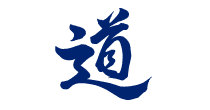




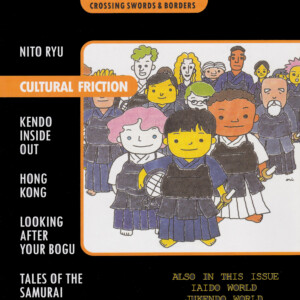
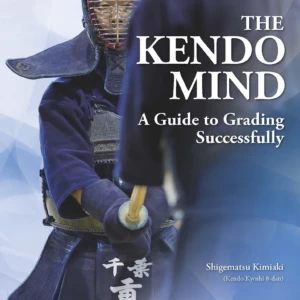
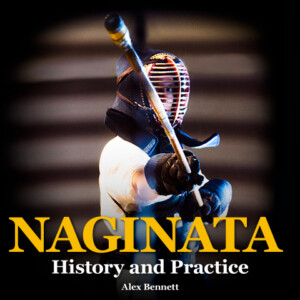
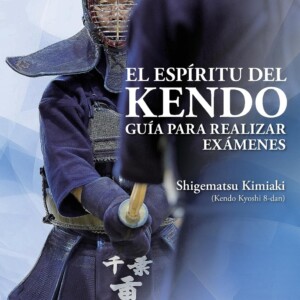
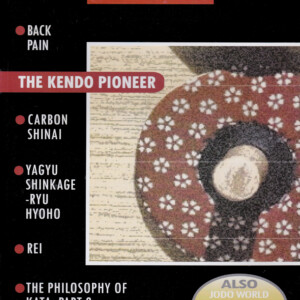
No comments yet.